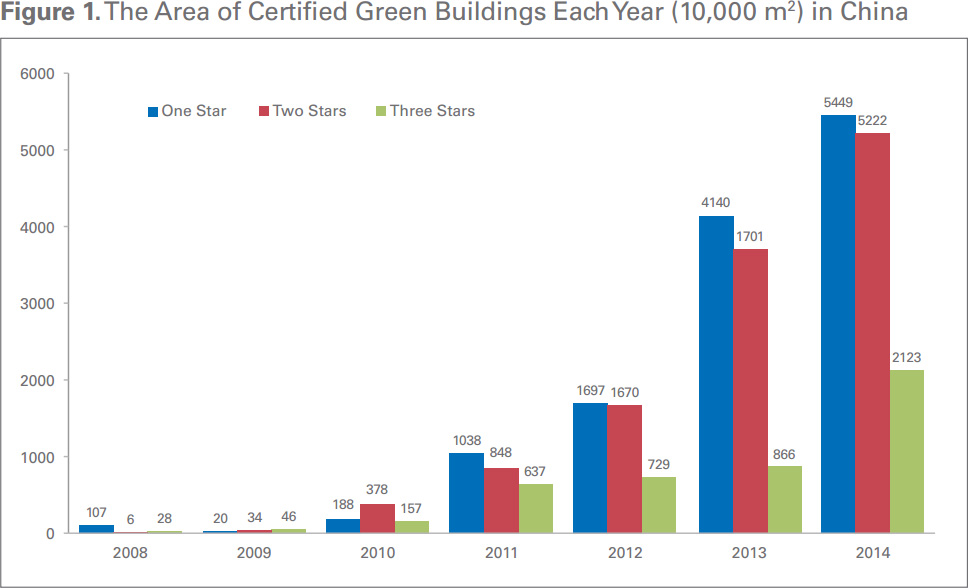-
Breaking Out of the Dome: Can Energy Efficiency Help Chinese Cities Conquer Air Pollution?
February 2, 2016 By Qinnan Zhou
In December 2015, Beijing issued its first-ever “red alert” for smog, its highest air pollution warning, which closed schools and restricted the number of cars on the road. Less than two weeks later, it issued its second.
Somewhat ironically, as people in Beijing were trapped under a dome of smog, world leaders were gathering in Paris for the United Nations climate conference (COP-21) seeking solutions to achieve a “clean and resilient” future. At COP-21, Chinese President Xi Jinping pledged to combat air pollution and peak emissions around 2030 by curbing coal consumption and scaling up renewables.
President Xi’s climate commitments can be seen as part of the government’s ongoing “war on pollution” that began in earnest in September 2013 when the Ministry of Environmental Protection issued the Air Pollution Action Plan. The action plan and new amendments to the Air Pollution Control Law last year mandate higher penalties for polluters and more stringent requirements for emissions monitoring.
However, many Chinese cities remain shrouded by persistent pollution so severe that last year even the mayor of Beijing called his city “unlivable.” Some city officials are now casting a hopeful eye on energy efficiency as a cost-effective way to reduce energy consumption and cut emissions. Using energy efficiency as a promising “weapon” against pollution was notably highlighted by Chinese mayors as they discussed their experience with low-carbon development and pollution control at a COP-21 summit for local leaders.
The China Environment Forum’s latest InsightOut issue, “Breaking Out of the Dome,” explores the potential of energy efficiency to clear urban skies. Drawing on opinions and recommendations from both Chinese and American experts, these solutions focus on major cities, not only because they are at the epicenters of China’s war on pollution, but because they possess the greatest potential for bringing clean energy solutions to scale.
Signal From the Top
It has been a decade since China’s leaders made improving energy efficiency a top priority. In the 11th Five-Year Plan they set ambitious national targets for lowering the energy intensity – the measure of energy efficiency of the country’s economy – 20 percent from 2006 levels by the end of 2010. They also launched an aggressive campaign to pressure the country’s top 1,000 energy-intensive industries to step up their energy-saving efforts.
Beijing updated the target in the 12th Five-Year Plan, aiming to cut energy consumption per unit of GDP an additional 16 percent below 2010 levels. By the end of 2015, the country had not only realized but exceeded the new goal with an extra 3.7 percent drop in energy intensity. At the 2015 National People’s Congress, Premier Li Keqiang further stressed that the government is committed to intensifying improvements in energy efficiency.
During President Xi’s first visit to the United States in September 2015, he announced a new commitment to meet China’s CO2 reduction goals by creating a national emissions trading system by 2017. This trading system could provide a significant market push for key industrial sectors in China – iron and steel, power generation, chemicals, building materials, papermaking, and nonferrous metals – to boost their investments in energy efficiency or be forced to close down.
Demand Response Programs
Shanghai, one of the pilot cities for the national emissions trading system, has been a very progressive city on clean energy, but it also maintains a fleet of inefficient and dirty coal-fired power plants to meet its massive energy peaks in the hot summer and cold winter months. It was the need to solve the significant peak-valley energy load problems that prompted the city to work with the Natural Resources Defense Council (NRDC)’s Beijing office and launch China’s first demand response pilot project in 2014.
By the end of 2014, Shanghai’s municipal government had recruited 31 industrial and 33 residential building clients for the project, which aims to better balance energy supply and demand during peak periods. Many of these are state-owned enterprises that were required to reduce their electricity demand during designated peak times and in return received 2 RMB for every kilowatt-hour saved. On August 29, 2014, for example, 27 building customers and 7 industrial customers reduced their consumption by 10 percent on average during a two-hour peak time.
Four more cities – Beijing, Foshan, Suzhou, and Tangshan – are poised to follow Shanghai’s lead to set up demand response programs. Hyoungmi Kim, an energy efficiency and utility policy specialist at NRDC, believes that as demand response gains greater momentum, the growth in energy efficiency will help cities reduce CO2 emissions and yield economic benefits.
Building Up to Green
As China’s cities continue to expand at breakneck speed, focusing on new construction could be a powerful way to achieve energy efficiency targets. China released its three-star rating system for “green” buildings in 2006. Judy Li and Zhiming Pan from NRDC’s green building team note that while green construction codes and guidelines are still at a nascent stage – to date only one percent of all buildings have been rated – they offer huge potential as a systematic way to incentivize innovative energy strategies.
It should be noted, however, that there is a difference between green design – how sustainably a building is constructed – and green operation – a building’s energy lifecycle, including maintenance and use. Li and Pan say the vast majority of green buildings in China are certified based on design only; only about five percent are certified for both green design and operation.
Lack of data makes it challenging to ensure green buildings remain energy efficient in their day-to-day operations and management practices. In the United States, coalitions of city governments, NGOs, private companies, and federal government agencies have worked closely on building energy benchmarking data, yielding great results in operational improvements and promoting market demand for energy efficiency.
While the Chinese central government technically requires local officials to collect information about building energy use, compliance is low. NRDC’s work on benchmarking policies with both national and local governments also revealed that building owners and real estate markets are not demanding energy use information. Moreover, Chinese citizens and civil society groups have not paid attention to the topic, likely daunted by the technicalities of benchmarking.
U.S.-China Cooperation
Although China’s increasingly more ambitious energy efficiency targets and policies have laid an important foundation, the country could benefit greatly from financing and technical support, which provides a window of opportunity for U.S.-China cooperation, write Fran Schulberg, Winston Gilcrease, Sara Chun, and Julia Beabout from the China-US Energy Efficiency Alliance.
Just a few days before President Xi’s first state visit to the United States, the Leading Group for Financial and Economic Affairs, the government’s highest body for supervising the economic work of the state, released a plan that would set up a $3 billion fund to encourage companies in both countries to invest in energy efficiency projects in China. The United States is equipped with the technology and expertise in energy efficiency, laying the groundwork for export opportunities, foreign direct investments, and joint ventures in China.
Aside from foreign investment, U.S. civil society offers considerable experience and expertise on strategies to promote energy efficiency policies and technology in Chinese cities as well. The American Council for an Energy-Efficient Economy’s David Ribeiro and Michael Jarrett detail a four-year-old City Energy Efficiency Scorecard, which catalyzed friendly competition among U.S. cities that ultimately resulted in two-thirds of surveyed cities committing to greater energy efficiency efforts. The scorecard could be applicable to Chinese cities to promote the same kind of energy efficiency gains.
With supportive polices, pilot programs, and strategic cooperation with the United States, there are paths forward for China to boost its energy efficiency performance, meet its pledge to peak emissions by 2030, and one day bring blue skies back to 700 million city residents.
Qinnan (Sharon) Zhou is the strategic partnerships assistant for Asia at The Climate Reality Project in Washington, DC. From August 2014 to September 2015, she was a research assistant at the Wilson Center’s China Environment Forum.
Sources: American Council for an Energy-Efficient Economy, Beijing Review, ChinaDialogue, China-U.S. Energy Efficiency Alliance, Deutsche Welle, Global Times, The Guardian, Ministry of Environmental Protection (China), The New York Times, South China Morning Post, The Wall Street Journal, World Bank, Yicai.
Photo Credit: Power plants in Huzhou, China, courtesy of flickr user Robert Thomson. Chart: Chinese Society for Urban Studies.
 A Publication of the Stimson Center.
A Publication of the Stimson Center.







